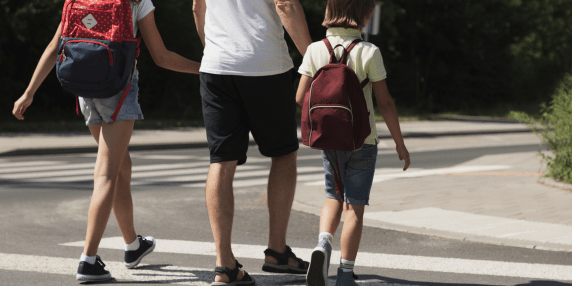Classes are set to resume across the Province tomorrow, meaning there will be more hazards and young pedestrians on the road.
According to ICBC, 30 children are injured in crashes while walking or riding their bike every month.
In the North Central region, 12 are injured every year, four of which are in Prince George.
ICBC is reminding drivers to use the following tips as children head back to class.
- Every school day, unless otherwise posted, a 30 km/h speed limit is in effect in school zones from 8 a.m. to 5 p.m. In playground zones, a 30 km/h speed limit is in effect every day from dawn to dusk.
- Leave your phone alone, and watch for children walking or cycling. Distracted and inattentive driving is one of the leading causes of crashes with pedestrians and cyclists.
- If a vehicle stops in front of you or in the lane next to you, they may be yielding to a pedestrian, so proceed with caution and be prepared to stop.
- Watch for school buses. When their lights are flashing, vehicles approaching from both directions must stop.
- Before getting into your vehicle, walk around it to make sure there are no small children hidden from view. Always look for pedestrians when backing up.
- Make sure your headlights, brake and turn indicator lights are clear, visible and in good working condition at all times. This can help pedestrians see you better.
- In residential areas, a ball or hockey net may mean that kids are playing nearby. Slow down and watch for children as they could dash into the street at any moment.
In addition to these tips, ICBC is reminding parents and caregivers that drivers aren’t the only ones responsible for safety:
- If your child walks to school, practice their route with them ahead of time. Review street names and landmarks to orient them. Make a fun, interactive game out of guessing the correct traffic signs and meanings with your child along the route.
- If you drop off your child in a school zone, they should exit the car on the side closest to the sidewalk.
- Teach your child the basics of crossing the street:
-
- Stop at the curb or edge of the road.
-
- Look left and right for oncoming vehicles, then look left over your shoulder for vehicles that might be turning.
-
- Make sure all vehicles have stopped before entering the road. Make eye contact with drivers before crossing, even if the walk signal is on.
-
- When the intersection is clear, start crossing and keep looking for approaching vehicles.
- Teach your child to walk on the inside edge of the sidewalk away from the road, so they’re further away from traffic. If there isn’t a sidewalk, they can walk facing oncoming traffic, so they can see approaching vehicles and make eye contact with drivers.
- Set a good example by not crossing mid-block or running to cross the street. Where possible, cross at intersections with a pedestrian crossing light or marked crosswalk. Avoid shortcuts through parking lots or around parked cars where it’s harder for drivers to see small children.
- Teach your child to put away electronic gadgets, cell phone and ear buds while walking or cycling so they can scan for approaching vehicles or hear traffic.
- If your child will be outside at night or in poor weather, make sure they’re wearing bright clothes and reflective gear.
- Discourage play around or on railways. Only cross railway tracks at designated signals or signs and watch your step.
ICBC has also invested $1.25 million into 101 projects focused on school safety since 2016.
Some of these upgrades include adding pedestrian signals to crosswalks, rapid rectangular flashing beacons, raised medians, pedestrian refuge islands, speed reader boards, and speed humps.


